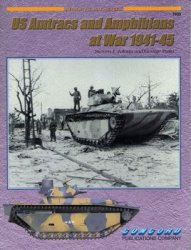Vittorio Veneto, Battle of see Italian CAMPAIGN, WORLD WAR 1.
Vizcaya campaign, (spring 1937), Spanish Civil War. With stalemate round Madrid, the Nationalists set out to reduce the northern coast. The attack began from Villarreal in the southeast on March 31. The Nationalist army under Mola consisted of four strong Car-list brigades. Franco’s finest Spanish troops, and an Italian division supported by the Italian Legionary Air Force and the Condor Legion. The Basque positions on mountain tops were easy targets for air attack. But to the Germans’ exasperation, the over cautious Mola did not exploit the holes created for him. Although Nationalist attempts to blockade Bilbao were thwarted, a lack of supplies and demoralization from air attack (the Condor Legion’s destruction of Guernica) contributed to the Basque retreat within the Iron Ring, Bilbao’s optimistically named defence system. This was breached on June 12 and the Basque government ordered evacuation. The remaining troops retreated towards Santander and Gijon, and two subsequent campaigns that summer and autumn were followed by five months of intensive guerrilla warfare in the Asturias. This delayed Franco’s achievement of numerical superiority on the other fronts until 1938. AB.
VJ Day. “Victory over Japan” day, August 15 1945.
Vlasov, Lt Gen Andrei, (190046). Russian. Commanding Second Shock Army, Vlasov was captured in June 1942 when encircled near Leningrad. He changed sides, broadcasting anti-Soviet propaganda and raising a “Russian Army of Liberation” {Russkaya Osvoboditelnaya Armiya; roa) from Soviet pows and forced labourers. This puppet force saw limited service on the East Front. In May 1945, Vlasov entered Prague with the 20,000-strong 1st roa Division, securing the city against weak German resistance and attempting to surrender it to US Seventh Army. Constrained by Yalta, the Americans refused, handing over Vlasov to the Soviets, who executed him in
1946. RO’N.
Vo Nguyen Giap see c;iai>, (;kn vo NGUYEN.
Voie Sacree see verdun (igic).
Voisin LA/LA S (French, WWl). Two-seat reconnaissance-bomber. Prototype (Voisin L) flew February 1914; two escadrilles equipped August 1914. Voisin LA introduced autumn 1914; on October 5 1914 France’s first air-combat victory scored by an LA. Some LA. S had 37mm or 47mm cannon; first Groupe de Bombardement formed with Voisins November 1914. Supplied to RFC, RNAS and Russia; built in Italy for use by 5 squadrig-lie. One Salmson engine, either 130hp M9 or 140hp B9; max. speed 68.4mph (llOkph); one rifle-calibre machine gun or 37mm cannon, 2001b (90kg) bombs.
Voisin 8 and 10 (French, WWI). Two-seat night-bomber; enlarged development of Voisin LA. Entered service late 1916; equipped at least 26 escadrilles', some remained in service until Armistice. Widely and successfully used as night-bomber, night-reconnaissance and in cannon-armed form. Load capacity increased in Voisin 10 with more powerful engine. Production, about 1,100 Voi8, 900 VoilO. One 220hp Peugeot (in Voi8), 300hp Renault (VoilO) engine; max. speed 75mph (120kph); two machine guns, one 37mm cannon, 6501b (295kg) bombs.
Volkssturm. A German Home Guard, established September
1944.
Volturno, crossing of the (October 12-14 1943). Fifth Army (Clark) attacked with X British Corps (McCreery) on the lower Volturno, and VI US Corps (Lucas) inland. The crossings were opposed by XIV Panzer Corps (Hube). The British were only partially successful in the coastal plain, but American successes in the hills turned the German line and persuaded Kes-selring to authorize the continuation of the slow withdrawal to the Gustav Line.
Voluntary Aid Detachment (VAD). Formed in 1910, this nursing organization served the British armed forces in the 1914—18 and the 1939-45 wars.
Voormezeele. This village, which in 1917 was close behind the British lines near St Eloi, south of Ypres, was lost to the Germans during their April 1918 offensive but recaptured by the US 30th Division, attached to the British 11 Corps, on August 31 1918.
Voronezh, Battle of (1942) see. Stalingrad, BATTLE OK.
Voroshilov, Marshal Kliment
(1881—1969). Russian. Played a leading role in the Bolshevik revolution in Petrograd and helped Dzershinsky to organize the Cheka to protect the new regime. In spite of his lack of military training, Voroshilov took command of Red Army units in the Ukraine, becoming commander of the Tenth Army in 1918. He fought throughout the Civil War, joining Budenny’s First Cavalry Army in the campaigns against Denikin, the Poles and Wrangel. After the war, Voroshilov remained in the Red Army and, largely because of his close political ties with Stalin, became one of its leading figures. In 1935 he was appointed People’s Commissar for Defence and created Marshal of the Soviet Union. But his position was dependent upon Stalin’s favour and he failed to intervene in the latter’s wholesale purges of the Red Army’s officer corps in 1937. Voroshilov’s influence on the development of the Red Army was often counterproductive and he was a fierce opponent of mechanization. Therefore, when the setbacks in the war against Finland showed up his and the army’s shortcomings, Voroshilov was to all intents and purposes relieved of his command and effective control passed to Timoshenko. Nevertheless, in July 1941 Stalin recalled his crony to take command of the Northwest Front with orders to stem the German advance on Leningrad. This Voroshilov conspicuously failed to do and in September he was replaced by Zhukov. In spite of his lack of achievement, he retained his place on the Soviet State Defence Committee and acted as a Stavka representative at various front headquarters during the rest of the war.




 World History
World History









